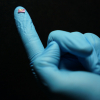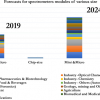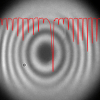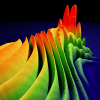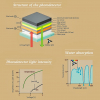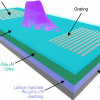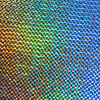Researchers from the National Physical Laboratory (NPL) have revealed unusual qualities in light that could lead the way to entirely new electronic devices and applications. As outlined in Physical Review Letters, NPL researchers investigated how light can be controlled in an optical ring resonator, a tiny device that can store extremely high light intensities. The first-of-its-kind study uses optical ring resonators to identify the interplay of two types of spontaneous symmetry breaking. By analysing how the time between pulses of light varied and how the light is polarised, the team has been able reveal new ways to manipulate light.
For instance, usually light will obey what is known as “time reversal symmetry”, meaning that if time is reversed, light should travel back to its origin. However, as this research shows, at high light intensities this symmetry is broken within optical ring resonators. Francois Copie, scientist on the project explains: “When seeding the ring resonator with short pulses, the circulating pulses within the resonator will either arrive before or after the seed pulse but never at the same time.”
The research also showed that light can spontaneously change its polarisation in ring resonators. This has not only improved our understanding of non-linear dynamics in photonics, helping to guide the development of better optical ring resonators for future applications (such as in atomic clocks for precise time-keeping) but will help scientists to better understand how we can manipulate light in photonic circuits in sensors and quantum technologies.
Pascal Del’Haye, Senior Research Scientist, National Physical Laboratory (NPL) said: “Optics have become an important part of our telecoms networks and computing systems. Understanding how we can manipulate light in photonic circuits will help to unlock a whole host of new technologies, including better sensors and new quantum capabilities, which will become ever more important in our everyday lives.”






